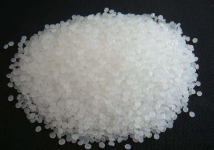read: 780 time:2025-06-27 10:55:30 from:化易天下
The question of "why phenols do not undergo Friedel-Crafts reaction" is one that perplexes many in the field of organic chemistry. The Friedel-Crafts reaction, both alkylation and acylation, is a fundamental method for introducing substituents onto an aromatic ring. However, phenols, despite being aromatic compounds, are notoriously difficult to engage in this reaction. This article delves into the reasons behind this, providing a detailed explanation.
Before we can understand why phenols do not undergo Friedel-Crafts reactions, it is essential to review the basic mechanism of these reactions. Friedel-Crafts alkylation and acylation typically involve the reaction of an aromatic compound with an alkyl halide or acyl chloride in the presence of a Lewis acid catalyst, such as aluminum chloride (AlCl3). The catalyst helps to generate a highly reactive carbocation or acylium ion, which then attacks the electron-rich aromatic ring, leading to the formation of the substituted product.
Phenol, characterized by the hydroxyl group (-OH) attached to the benzene ring, is a highly reactive molecule. The hydroxyl group is an electron-donating group via resonance, significantly increasing the electron density on the benzene ring, particularly at the ortho and para positions. This makes phenol an excellent candidate for electrophilic aromatic substitution (EAS) reactions. However, the same reactivity that makes phenols prone to EAS also complicates their involvement in the Friedel-Crafts reaction.
One of the primary reasons why phenols do not undergo Friedel-Crafts reactions is the interaction between the hydroxyl group of phenol and the Lewis acid catalyst. The hydroxyl group is highly nucleophilic, meaning it has a strong tendency to donate a pair of electrons. When a Lewis acid like AlCl3 is introduced, it coordinates with the lone pairs on the oxygen atom of the hydroxyl group, forming a complex. This complexation withdraws electron density from the aromatic ring, deactivating it towards further electrophilic attack.
In simpler terms, the coordination between the phenol’s hydroxyl group and the Lewis acid makes the aromatic ring less reactive, preventing the formation of the carbocation intermediate necessary for the Friedel-Crafts reaction to proceed. As a result, the reaction either does not occur or leads to highly undesirable side reactions.
Another critical factor is the deactivation of the aromatic ring due to the formation of the complex between the phenol and the Lewis acid. When the hydroxyl group coordinates with the catalyst, it can actually withdraw electron density from the ring through inductive effects, counteracting the usual activating influence of the hydroxyl group. This deactivation makes the ring less susceptible to the electrophilic attack that drives the Friedel-Crafts reaction. Consequently, phenols are not suitable substrates for this reaction, leading to the conclusion that phenols do not undergo Friedel-Crafts reactions under normal conditions.
In addition to the issues already discussed, another reason why phenols do not undergo Friedel-Crafts reactions involves side reactions and catalyst poisoning. When phenols are introduced into a Friedel-Crafts reaction mixture, the strong interaction between the phenol and the Lewis acid can lead to the formation of a stable, inactive complex that effectively poisons the catalyst. This means that the catalyst is no longer available to facilitate the desired reaction, further explaining why phenols do not undergo Friedel-Crafts reactions.
In summary, the reasons "why phenols do not undergo Friedel-Crafts reaction" are multifaceted. The nucleophilic nature of the hydroxyl group, its interaction with the Lewis acid catalyst, the resultant deactivation of the aromatic ring, and the potential for catalyst poisoning all contribute to the inability of phenols to participate in this important reaction. Understanding these factors is crucial for chemists who are designing synthetic pathways involving aromatic compounds, as it highlights the limitations and challenges of working with phenols in Friedel-Crafts reactions.

Jincheng Petrochemical's 300000 ton polypropylene plant successfully trial production, 2024 polypropylene market analysis

The ABS market remains sluggish, what is the future direction?

Market differentiation of bisphenol A intensifies: prices rise in East China, while prices generally decline in other regions

The production method and process flow of silicone acrylic lotion, and what are the common raw materials